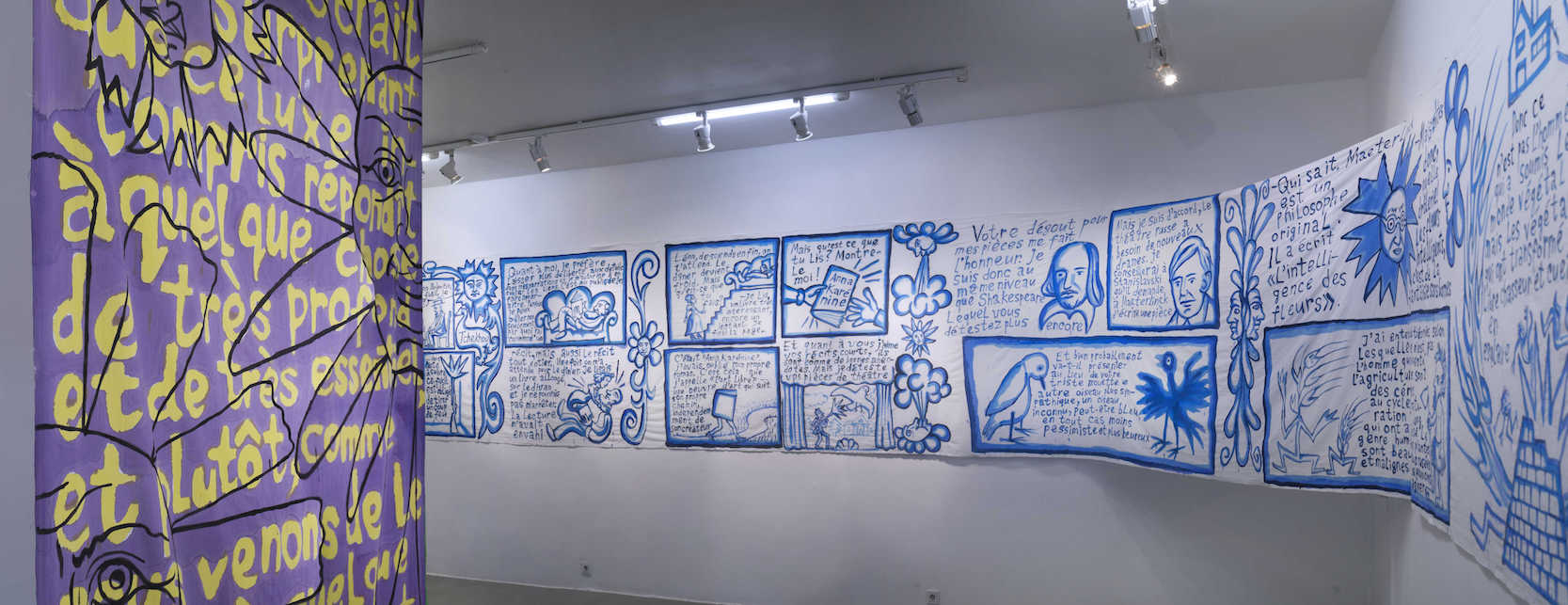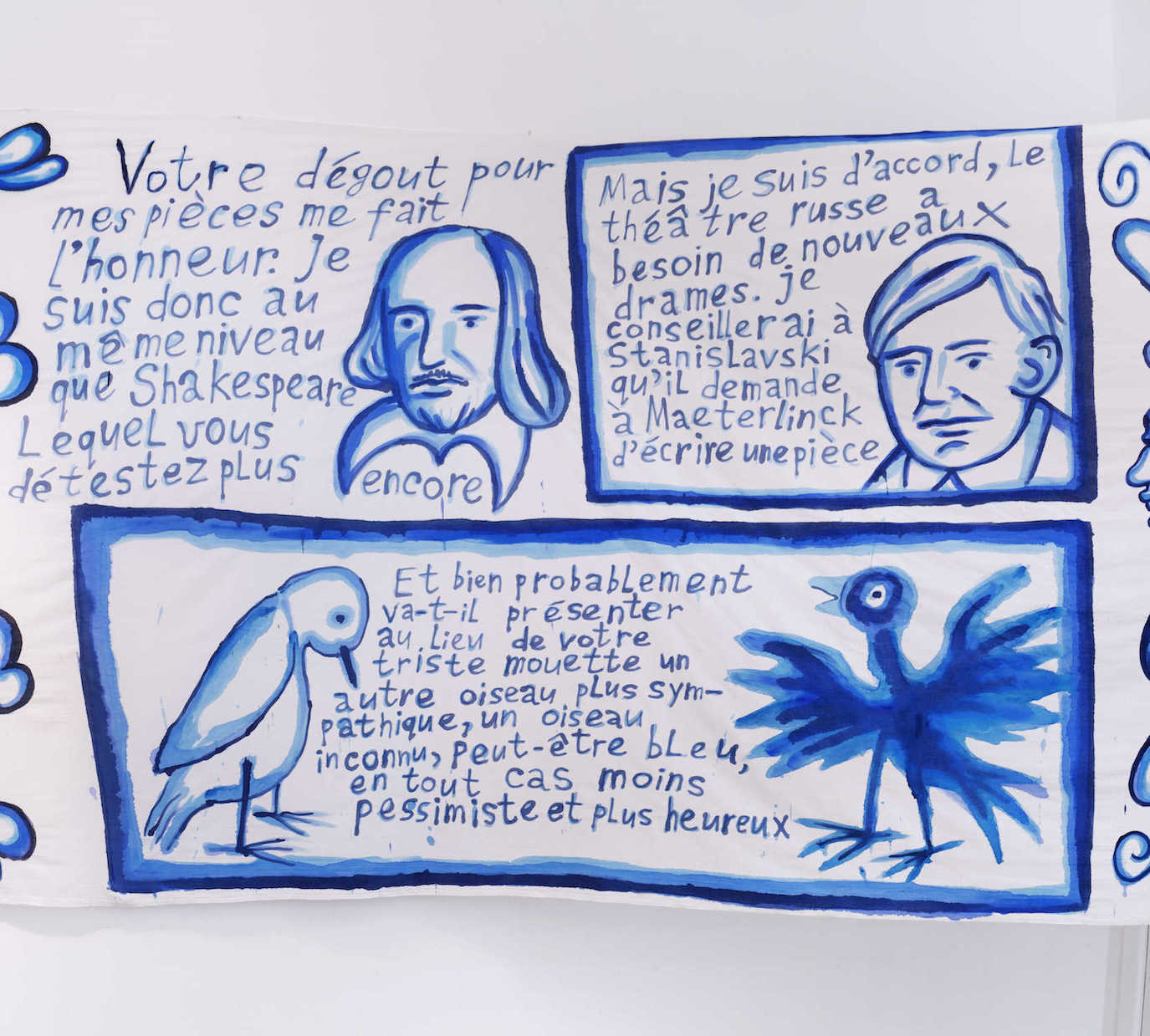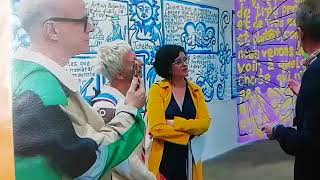











Georgy Litichevsky’s project is inspired by the text of Maurice Maeterlinck, who is only remembered today by cultural historians, despite having been incredibly popular at the beginning of the last century.
In the project, Maeterlinck encounters Anton Chekhov, the Russian writer and dramatist, who, despite all the differences in their creative approaches and outlooks, was a very active promoter of the work of his Belgian colleague in Russia, particularly on the Russian stage. A diffusion of the texts of Chekhov and Maeterlinck takes place. Depicted in the blue tones of Gzhel porcelain, the comic strip, rendered on fabric, turns The Seagull (from the play of the same name by Chekhov) and The Blue Bird into a single being, a Blue Phoenix, as it were, that enters into a discussion-dialogue with intelligent flowers. Over the course of this discussion-dialogue, issues posed by the two writers are revitalized – from the crossroads that lies ahead of civilization in the world to evolution and ecology, their plays and essays are interpreted as tracts on aesthetics and artistic manifestos that resonate with the issues of contemporary art.
The comic is complimented with vertical works on fabric bearing quotations from Maetherlinck’s tracts, depictions of flowers and his portrait.
A Manifesto for Floratism
From the era of the Neolithic Revolution, the rhythm of evolution has been a matter of great leaps forward, rather than incremental in nature, and evolution itself, previously universal, has become fractured and hetero-evolutionary in nature. The previous competition of the species has been replaced by the destructive egoism of a single species. Of course, the entire responsibility for the threat of involution or transvolution lies with man, though it must also shared by his allies in the animal and, in particular, the plant kingdoms, primarily among grains and legumes. According to certain hypotheses, the rise of cultivation of the land was a result of plants, not being able to mature through their own resources, “domesticating” man, implanting the idea of their edibility in him and pushing ancient primates towards regular work on the destruction of their competitors, the “weeds.” This union of egoists and cunning tricksters led to the permanent destruction of anything in the surrounding world that was superfluous and “not valued” in processes of transvolution, involution and general collapse that became dangerously far-reaching.
Our best hope is flowers. As well as art, which, although it lies within the system of mechanisms for suppression and domination, has nevertheless retained the rudimentary characteristics of a reservoir of criticism, self-criticism and candor. Art, mobilizing sensitivity and susceptibility, can respond to the message of the intelligence of flowers. Flowers, using the richness of their experience in collaboration with insects, birds and animals, including their communication skills, actively send signals. The content of those signals – floratism (or floractivism) – rather than an alternative teaching that should be decoded, is a position. Floratism opposes species egoism and the faux-patronage of the environmentalism. In return, it offers true cooperation for everything that is alive within the framework of
universal evolution.
Georgy Litichevsky
Videos
